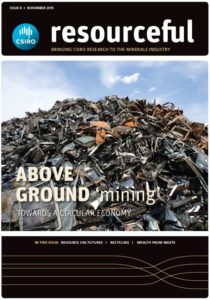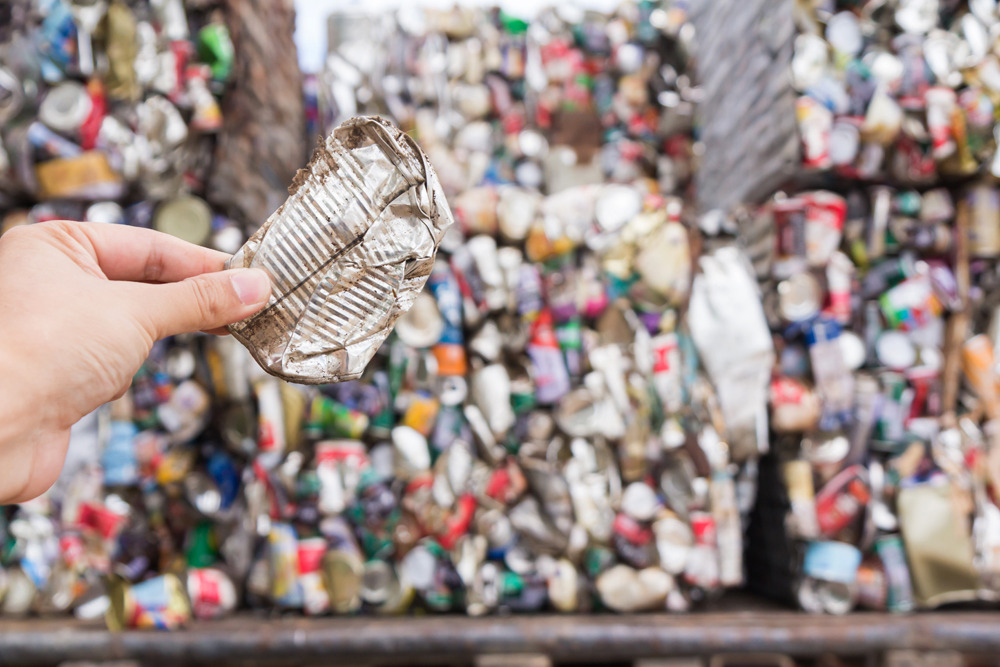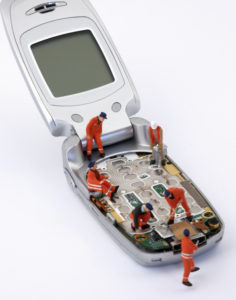For many years we've relied on a model of turning raw materials into goods that will eventually end up in a landfill. This approach is both economically and environmentally unsustainable, which is why we need the research and innovations that can enable industries to prosper and unlock sustainable solutions.
Madonna was right. We are living in a material world. And as ‘material girls’ (and boys) much of what we use in our daily lives is constructed from materials that started life underground.
Mining mineral materials and metals is a global industry, and Australia’s recent economic riches have ridden upon a boom in demand for our bountiful ore reserves. But these underground reserves are limited and are getting harder and more expensive to retrieve.
Did you know: one tonne of waste mobile phones can yield up to 160 grams of gold?
With more valuable metals now available ‘above ground’ than in underground reserves, the case for recycling and using resources more efficiently becomes compelling. For example, a goldmine of reasonable grade may produce around five grams of gold per tonne of ore whereas the recovery of gold from one tonne of waste mobile phones can yield up to 160 grams.
For many years we have relied on a model of turning raw materials into goods with a limited life, eventually retired into landfill; an approach both economically and environmentally unsustainable. Research and innovation that can enable our industries to prosper by creating wealth and new products from waste may hold the key to unlocking a sustainable solution.
In our November edition of resourceful, we look at some of the issues involved in creating a ‘circular economy’, which factors in reduction of waste through re-use, recycling and recovery, creating a circular flow of resources.
‘What goes around comes around’ presents a persuasive perspective of waste as economically valuable resources. The World Economic Forum estimates the cost savings of a circular economy could be US$1 trillion a year by 2025, of which Australia’s share would be about A$26 billion. Figures from the Australian Bureau of Statistics report the amount of waste generated between 1997 and 2012 grew 145 per cent, despite only a 22 per cent rise in population. What presents as a growing problem may in fact offer new wealth opportunities.
Technology and innovation are already opening opportunities for waste re-use. University of New South Wales Professor Veema Sahajwalla’s initiative to feed waste tyres into One Steel’s electric arc furnaces is a good example of circular economy in action, so far diverting more than two million tyres from landfill.
‘Innovations for a changing world’ provides even more examples of new ways to increase resource productivity, from new processing approaches to using efficient technologies like 3D printing.
 A new approach to bauxite processing developed by one of our scientists Mark Cooksey not only extracts valuable aluminium with less environmental impact, it also allows for the recovery of other metals, such as titanium and silicon, making the process more economically attractive.
A new approach to bauxite processing developed by one of our scientists Mark Cooksey not only extracts valuable aluminium with less environmental impact, it also allows for the recovery of other metals, such as titanium and silicon, making the process more economically attractive.
Our hunger for materials is growing and so to remain living in our material world we also need new ways to ensure we get the most from what we already have.
For more stories from this issue of resourceful, or to subscribe, visit www.csiro.au/en/Research/MRF/Areas/Resourceful-magazine.
resourceful magazine brings you the latest in innovation, technology and research from across the minerals value chain, from mineral exploration to mining and metal production.




12th December 2015 at 9:10 pm
Its refreshing to at last see some discussion around the application of Industrial Technology, albeit somewhat limited. Some understanding of the conceptual foundation would add to the efficacy, After all the ‘circular economy’ is something nature/biology and the earth’s systems has been doing for millions of years. It is not just waste but being wasteful that has been the issue especially since the rise of anthropocentric industrialisation. Refusing conspicuous consumption, planned obsolescence and addressing rampant materialism are matters that need to be addressed before superficial recycling. Burning tyres in an arc furnace is an androgenic process that has little to do with ecology. It would be hoped that we could learn from environmental processes and systems in preference to socially constructed human solutions.